When a company is solving problems for its customers, there are two things to consider: whether it’s building a product no one wants or a product that goes in the trash can. When you invest your time, money, and effort in a project, you want to ensure that you are doing the right thing. A decision matrix helps solve confusion surrounding complex problems. It will give you guidelines on how to choose from multiple options and select the best alternative course of action.
Table of Contents
What Is a Decision Matrix?

A decision matrix is a chart that helps you identify your options and prioritize them based on criteria you define in advance. You can use it as an aid or guide when making important decisions, such as choosing between two or more options that are equally desirable yet incompatible with each other (e.g., becoming a doctor vs. becoming an artist).
Decision Matrix Templates
The basic format of a decision matrix involves listing possible options on one axis and criteria relevant to those options on another axis (see the example below). You then place markers next to each option based on how well it meets your needs; these markers form the basis of your evaluation.
A Decision Matrix Template is a tool used to systematically evaluate and compare multiple options or alternatives based on specific criteria or factors. It provides a structured framework for decision-making by assigning weights to criteria and scoring each option against those criteria. Decision Matrix Templates help individuals or teams make informed decisions, prioritize choices, and objectively assess the potential outcomes or impacts of each option.
Where is Decision Matrix used?
Decision matrices are used in various fields, including business, politics, and sports. They are often used to make strategic decisions or choices.
In business, decision matrices are useful for evaluating a company’s strategic direction, product portfolio, and marketing strategy. For example, a company may use a decision matrix to evaluate its branding options by comparing the benefits of each strategy against the costs associated with implementing each option.
In politics, decision matrices are often used during election campaigns to determine how best to allocate resources between different campaign strategies. For example, a candidate might create two columns on their decision matrix: one where they list all the advertising channels they could use (such as TV ads, direct mail, and billboard ads) and another column where they list how much money they have to spend on each channel (for example $1 million for TV ads). Then they would assign each campaign channel a score based on how effective it is likely to be at reaching voters in their target market. This process would help them decide which campaign channels provide the highest return on investment (ROI).
In sports, decision matrices can be used when analyzing plays so that coaches can see whether or not they should call certain plays in certain situations.
Product management, project management, and business process analysis. For example, product managers use decision matrices to evaluate new features or products and determine which ones are most likely to succeed.
Customer research and product development teams use them to analyze market data and identify trends or improvement opportunities within their products or services.
Financial analysts use decision matrices when trying to decide whether an investment is worth the risk or not. Suppose a company is considering investing in a new product line, for example. In that case, it will analyze all the possible scenarios in order to determine whether it makes sense from both a financial perspective as well as from an operational perspective.
Types of decision matrices
There are many different types of decision matrices; here are some examples:
Unweighted decision matrix
An unweighted decision matrix is where you assign weights to each outcome, e.g., 1, 2, and 3. The sum of these weights should add up to 100%. An example is if you are trying to decide whether to buy a house. You could assign weights such as 50% for buying a house and 50% for staying in your current rental property. You then place the outcomes on the grid (1 for yes, 2 for no, and 3 for maybe). If the total weight is 100%, you will buy the house; if it is less than 100%, you won’t buy it.
Weighted decision matrix
A weighted decision matrix is where each outcome has its own weighting and is assigned a value from 1-3 (depending on how high or low priority this outcome is). An example would be if you were trying to decide whether to buy an electric car or not. You may have an outcome that says, “I want it cheap,” which has been given an importance of 80%, while “It must have a good range” has been given an importance of 20%.
Things to know before creating a decision matrix
Before creating a decision matrix, you need to understand the following things:
Detailed options
The first thing you need is detailed information about each option. You need to know everything about its pros and cons, what it will cost, and how much time it will take to implement. Include some examples of similar projects that have already been completed successfully so that you can use them as reference points in your decision matrix.
A realistic weighting system
Next, calculate each aspect’s importance for making your final choice by assigning weights to each item on your list. You can use different scales depending on whether each characteristic is qualitative or quantitative (for example, five stars or five dashes). This way, you’ll be able to see how important each feature is on its own before adding them together and comparing them against each other when creating your final decision matrix.
Define clear criteria
You must ensure that all criteria have been defined properly and clearly. This way, you can avoid confusing customers with unclear messages later on. It’s important to define criteria as specifically as possible so that they can help you make better decisions in the future.
Make sure there are no contradictions.
After defining all criteria, check them thoroughly against each other to ensure there are no contradictions between them that might lead to errors when using your decision matrix later. For example, if one criterion says that products should be easy to use while another says they should be intuitive, then there is likely something wrong with these two criteria since they contradict each other.
A proper, appropriate scale
For rating items, you can use scales such as 0-10 or 1-5, but the most commonly used is 1-3 (poor, good, and excellent). Make sure that all criteria have an equal weight so that your decision is uniform.
All possible alternatives must be included in your matrix, even if they seem unrealistic or unlikely at first glance (e.g., when evaluating potential investments). If you want to exclude some options from your analysis, mark them with “N/A” or “not applicable” and move on with other alternatives.
How to Use a Decision Matrix?
Decision matrices are used in business and operations research, but individuals can also use them. A decision matrix can help you choose between two or more options when you’re trying to make a difficult choice.
Here are the steps for using a decision matrix:
List your options and criteria.
The first step is to list all of your options. Don’t worry about sorting them into good and bad yet. Just write them down in whatever order they come to mind.
Once you have all your options listed, it is time to consider what criteria you will use to evaluate them. You should have at least three criteria and at most five. Remember that these are not just arbitrary numbers or qualities; they must be important factors that will help you choose between the options in your decision matrix. The more clearly defined these criteria are, the better chance you have of making an informed choice based on them.
Design a rating system for each criterion
Once you have decided on what criteria will be used, then it is time to assign ratings for each option based on how well they match up with those criteria (i.e., how well does this product meet my needs?). This step may take some time because it requires some serious thought about how much each option meets each criterion.
Draw a table that will feature the matrix
Another step in creating a decision matrix is drawing a table that will feature the matrix. The table should have four columns and two rows. The first column represents the factors you need to consider while making your choice, while the second column represents the options available. The third and fourth columns represent how important each factor is and how good each option is for it, respectively.
Rate the options
After drawing your table, rate each factor for every option using numbers from 1-10 or 1-100, depending on how many levels of importance you want to assign them. For instance, if you want to assign five levels of importance to each factor, then you can give them scores from 1-5 (1 being least important).
Next, fill out all the blanks by entering the options available to you against every factor/score combination on your table. When doing this, make sure that you only consider realistic options; otherwise, there will be no point in making a decision matrix because it won’t reflect reality!
Calculate the weighted score
Assign weights to each attribute depending on its importance in making your decision. The higher the value, the more important it is for you. Calculate scores for each alternative by adding up their weighted scores and then selecting the highest one from the list.
Mark the totals and plan a way forward
Mark where each alternative falls within your decision matrix in terms of its total score. This will help you see which alternatives are better than others and help you make an informed choice based on your priorities and needs.
Conclusion
Well, so far in this discussion, we have highlighted the various types of decision matrix template and their importance. You need to consider many things, including your business size, the dilemma you want to solve, the people involved in making decisions, etc. The decision matrix template helps you make major decisions in your business a lot easier, faster, and more effectively. It offers you a simple way to list all possible solutions and then ranks them. Therefore, you can easily move into the implementation process by choosing the top few solutions.
FAQs
How do you create a decision matrix?
To create a decision matrix, list decision criteria as columns and options as rows. Assign weights to each criterion for importance. Score each option on how well it meets the criteria. Multiply scores by weights and total the scores to identify the highest scoring, optimal choice.
What is a decision matrix template?
A decision matrix template is a pre-made table for evaluating options against weighted criteria. It includes columns for criteria, weights, and scoring sections for each option. Formulas automatically calculate total scores. Templates allow quick creation of decision matrices.
How do you create a decision matrix in sheets?
In Google Sheets, list criteria horizontally and options vertically. Enter numeric weights for each criterion in the second row. Score options 0-100 based on criterion fulfillment. Use a SUM formula to multiply scores by weights and calculate totals. Sort totals to reveal the highest score.
How do I create a selection matrix in Excel?
In Excel, make columns for criteria, weights, and one column per option to score. Assign weights numerically. Input option scores and use SUMIFS formulas to apply weights. The totals will reveal the best choice. Conditional formatting like color scales visually differentiates high and low scores.
What types of criteria should you include in a decision matrix?
Criteria may include costs, risks, benefits, alignment with goals, resources required, performance, quality, flexibility, sustainability, and other relevant decision factors. Include both hard data-driven metrics and subjective assessments.
Should every criterion be weighted equally in a decision matrix?
No, the importance of each criterion may vary, so assigning relative weights helps prioritize the most important factors in the decision. Weights are assigned as numbers like 1-5 or percentages summing to 100%.
When is using a decision matrix most helpful?
Decision matrices are most helpful for complex decisions involving multiple criteria and alternatives. They provide a structured, analytical approach to evaluate options and support decision making based on objective assessments.


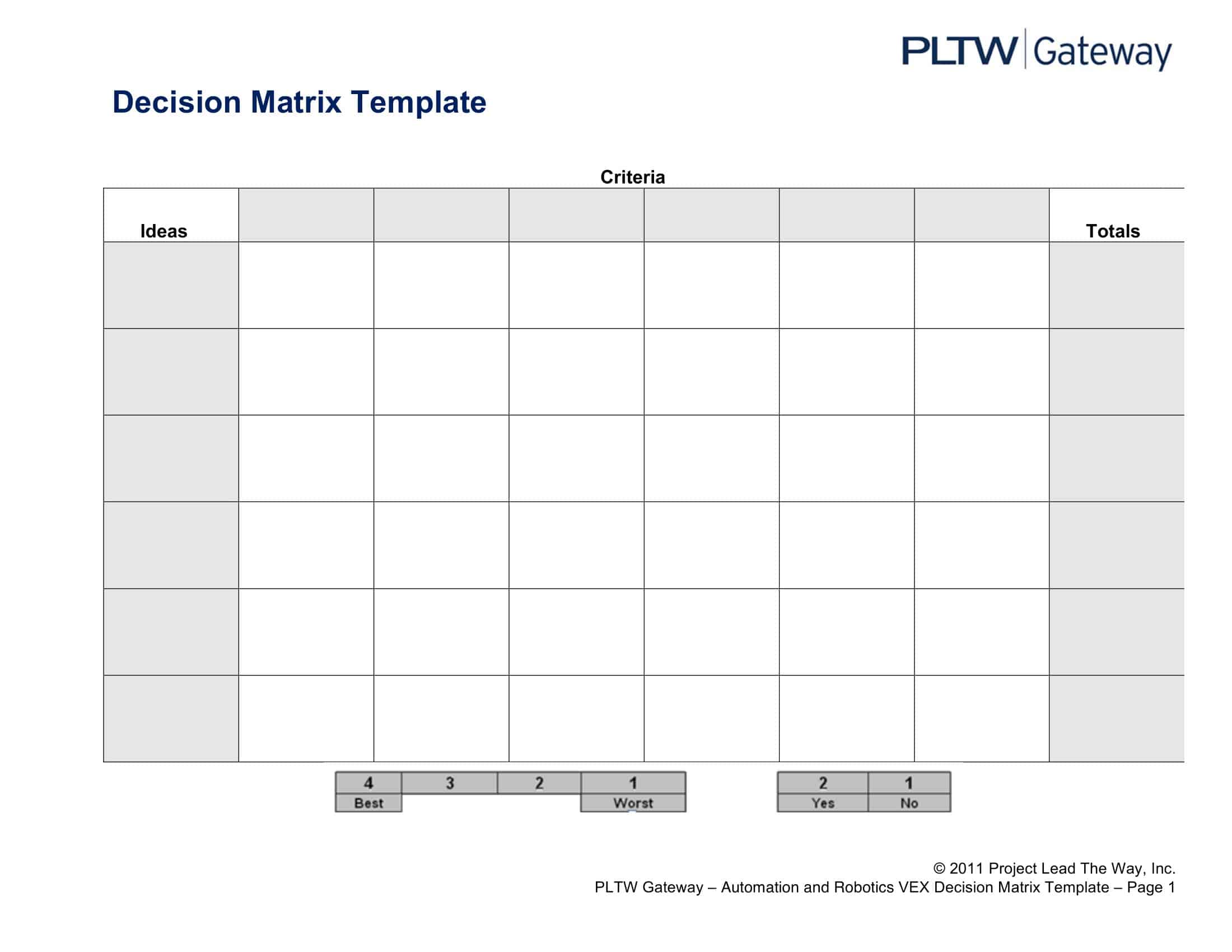
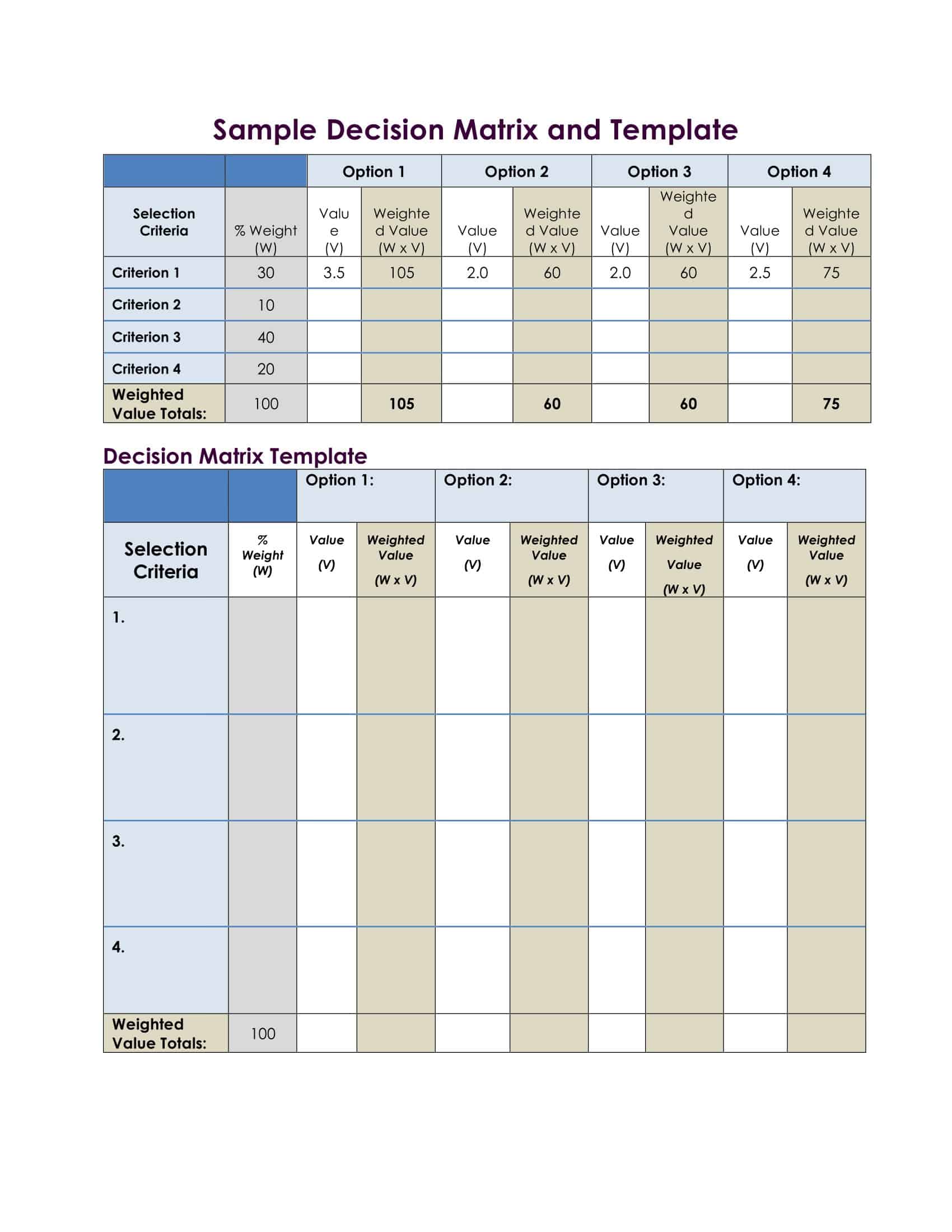
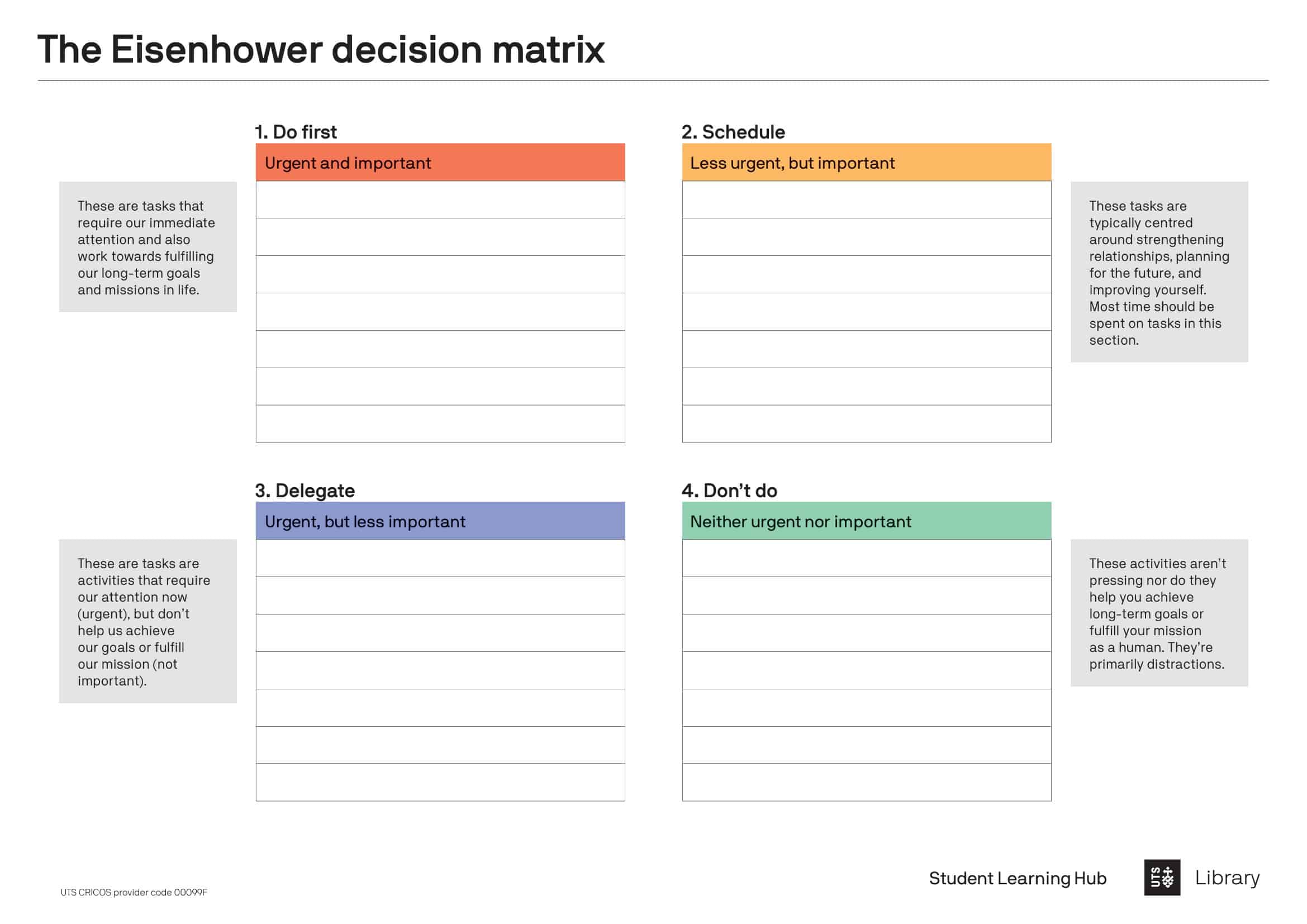
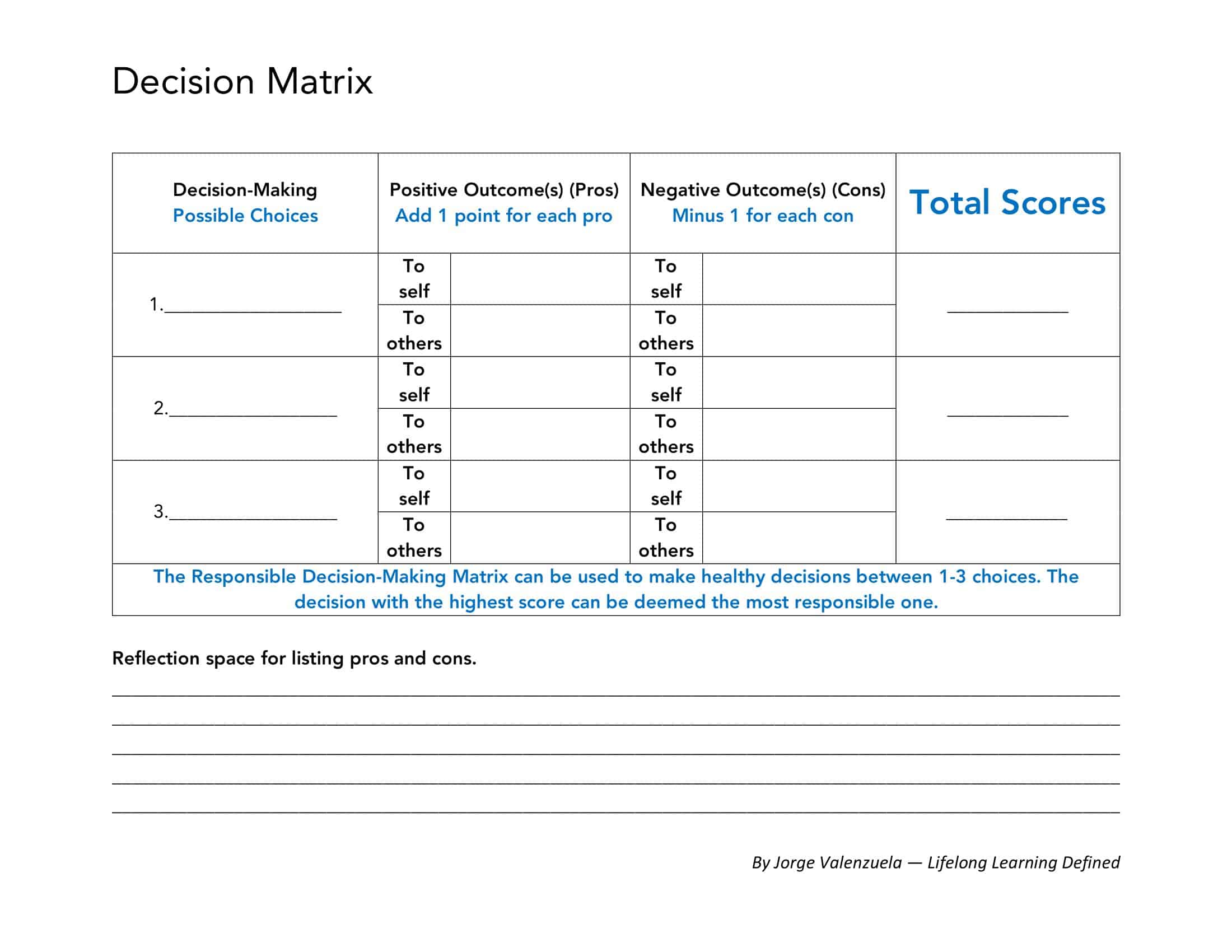




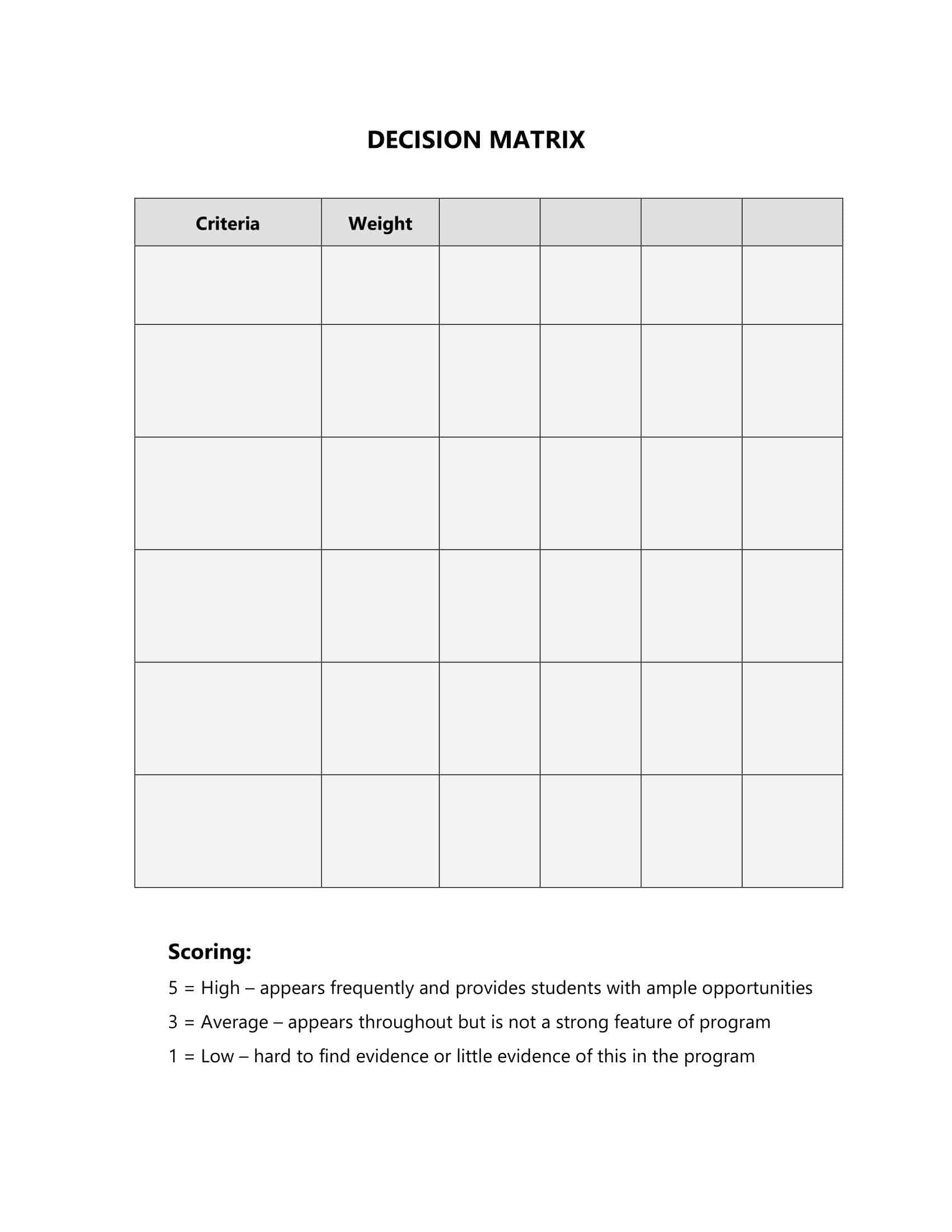
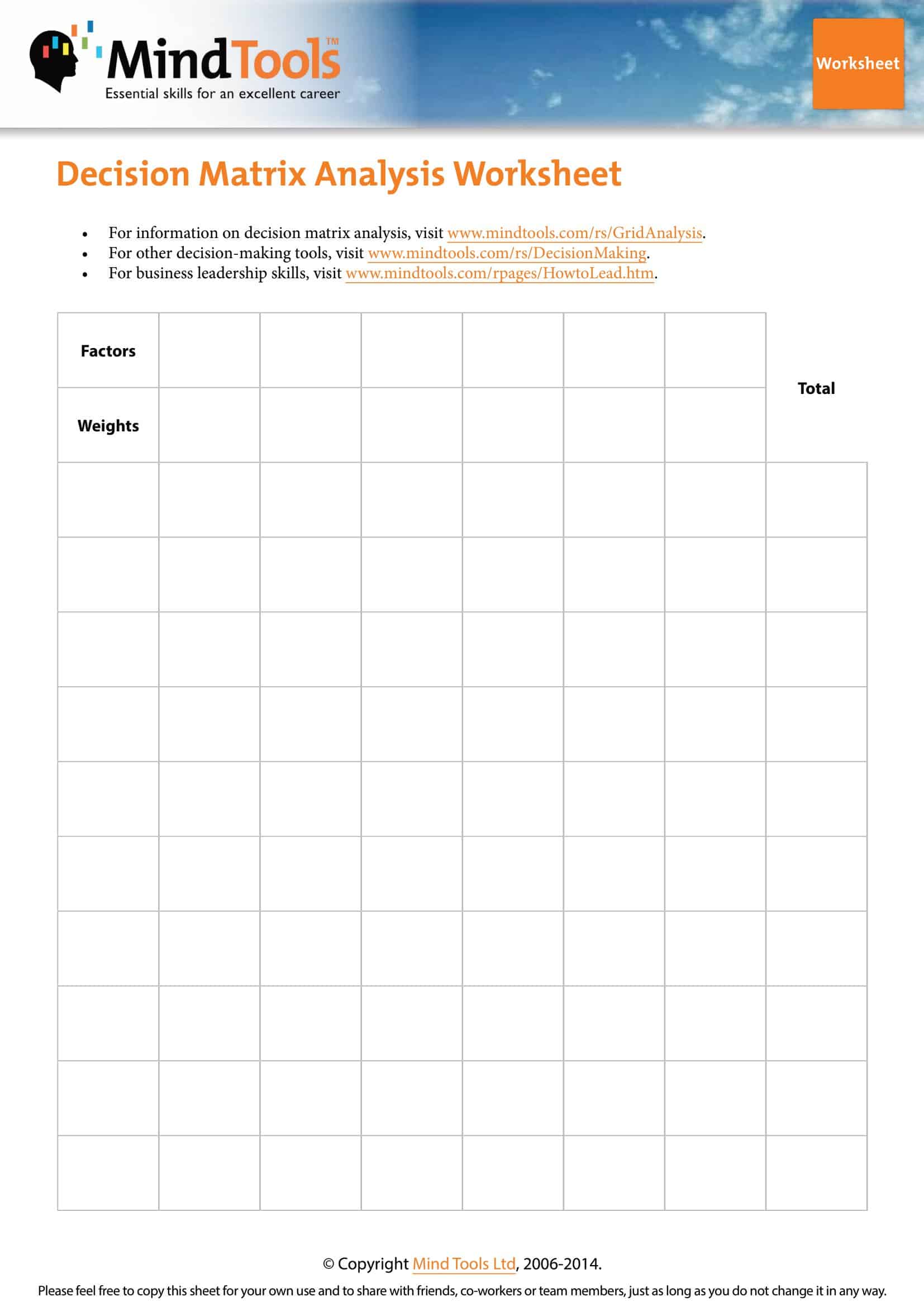









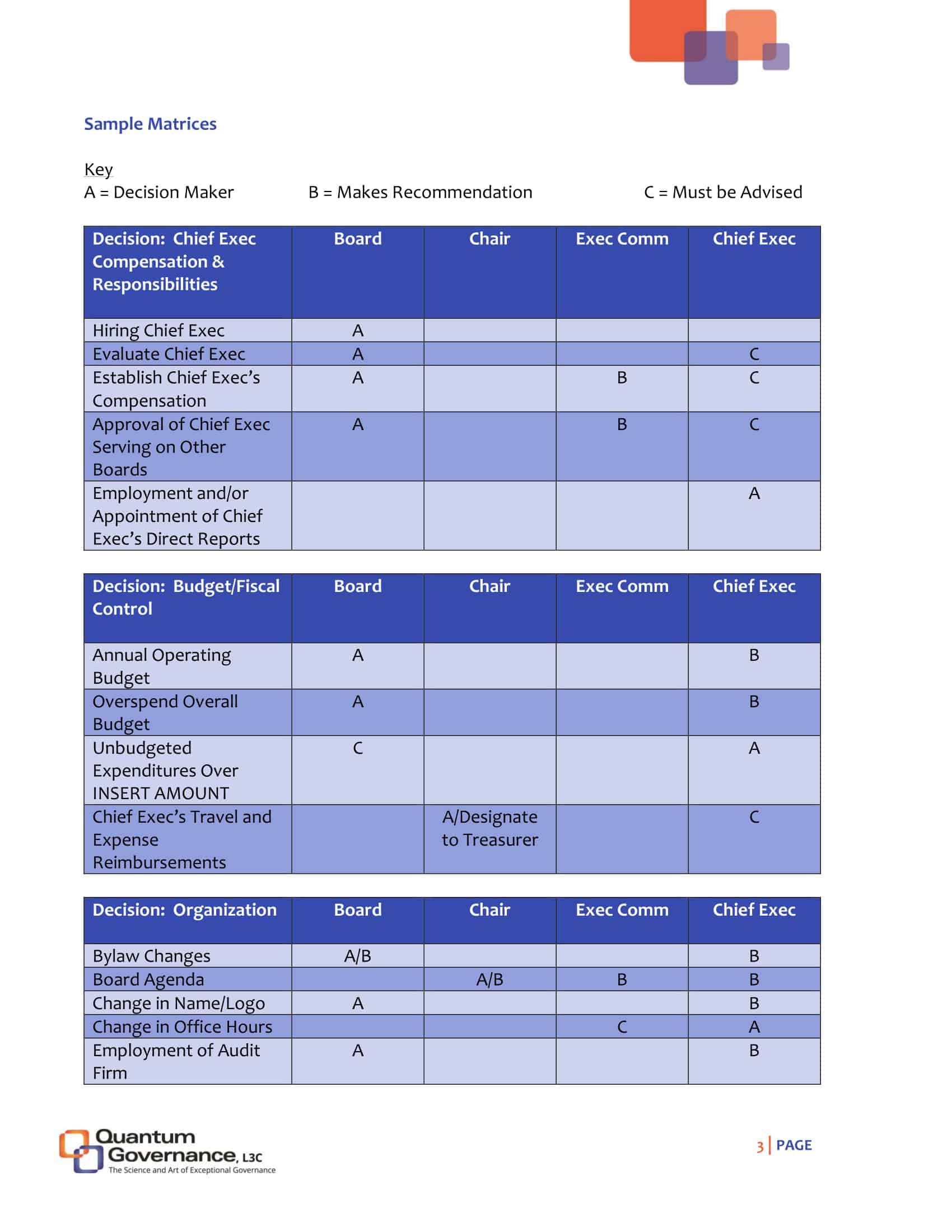

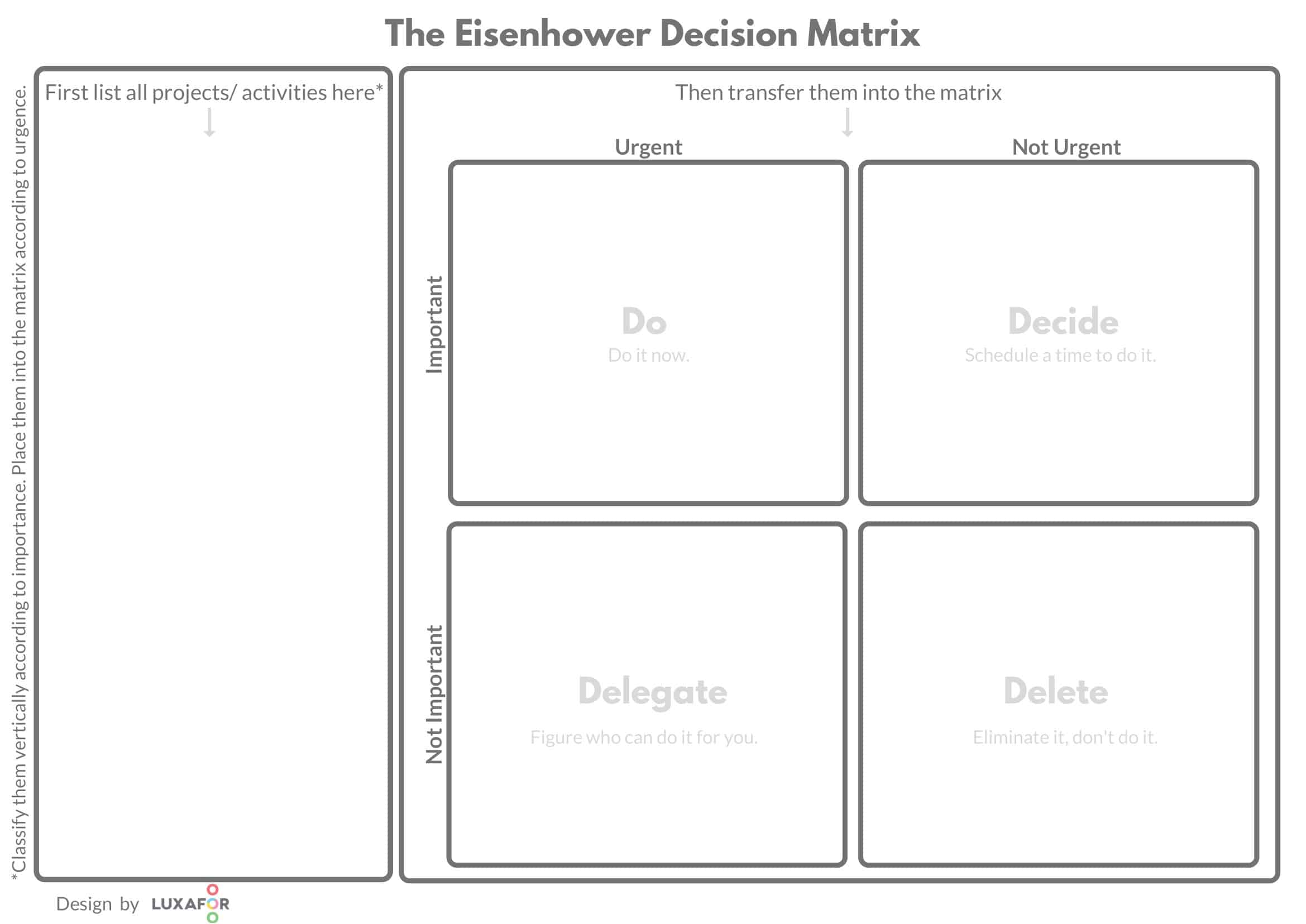
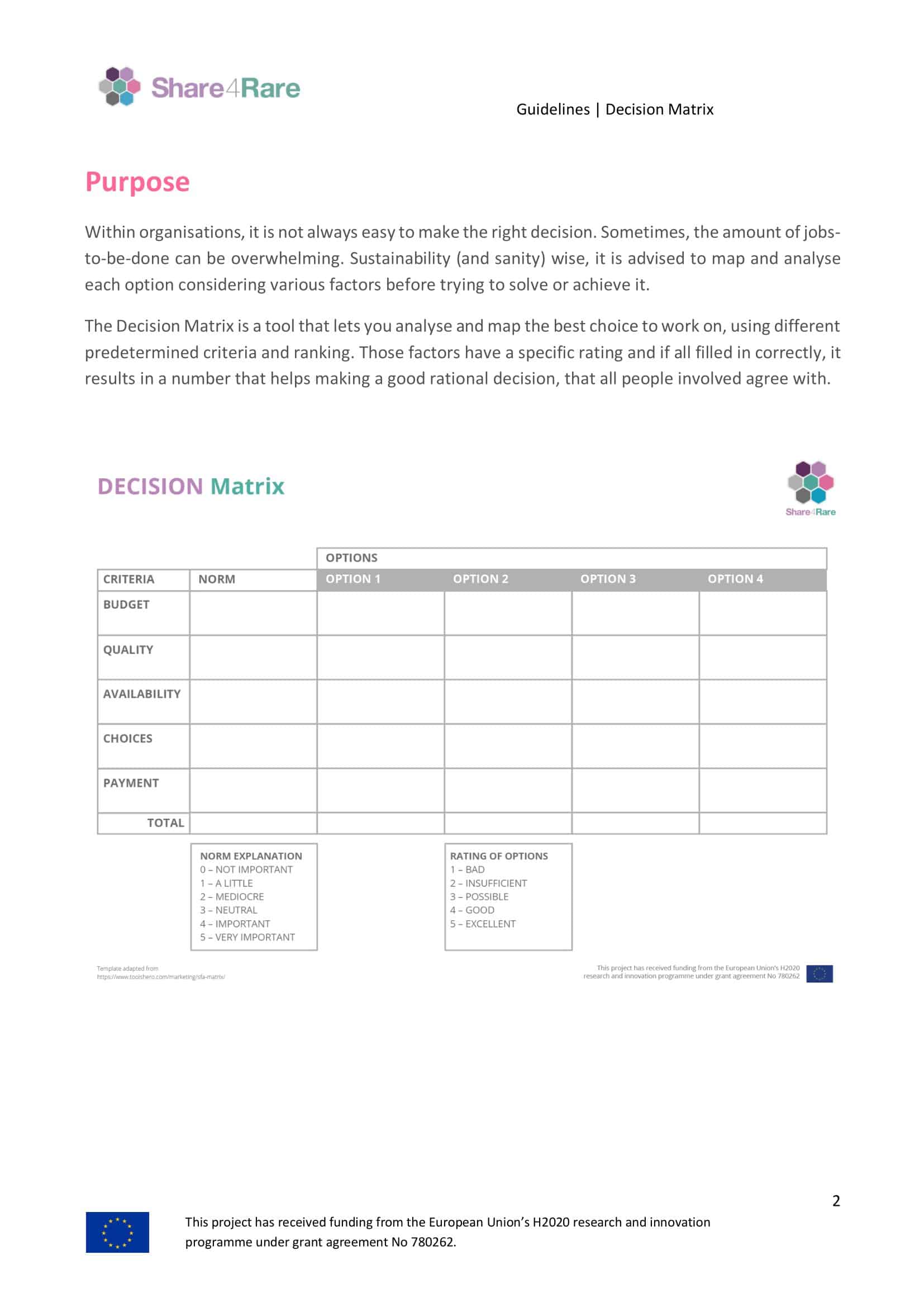



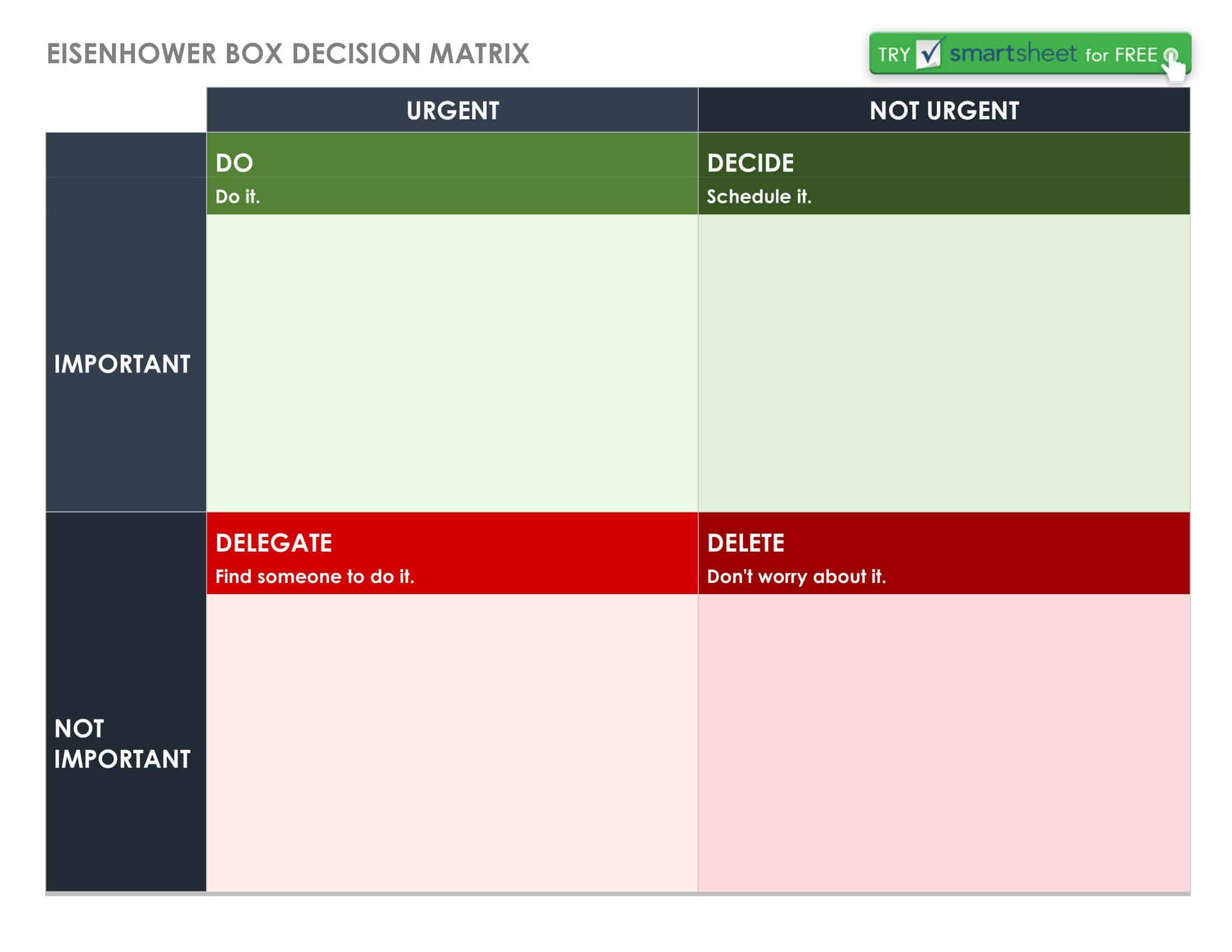







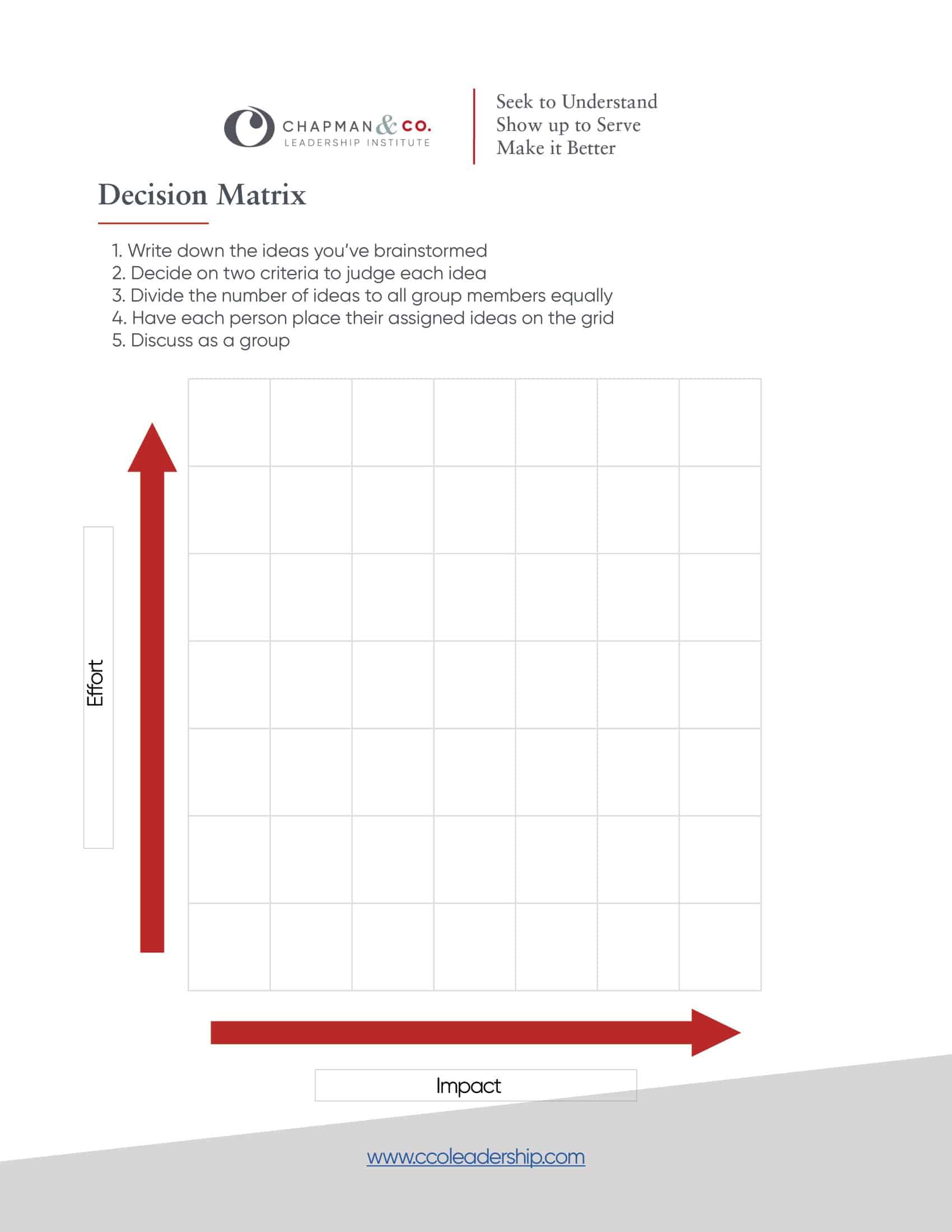



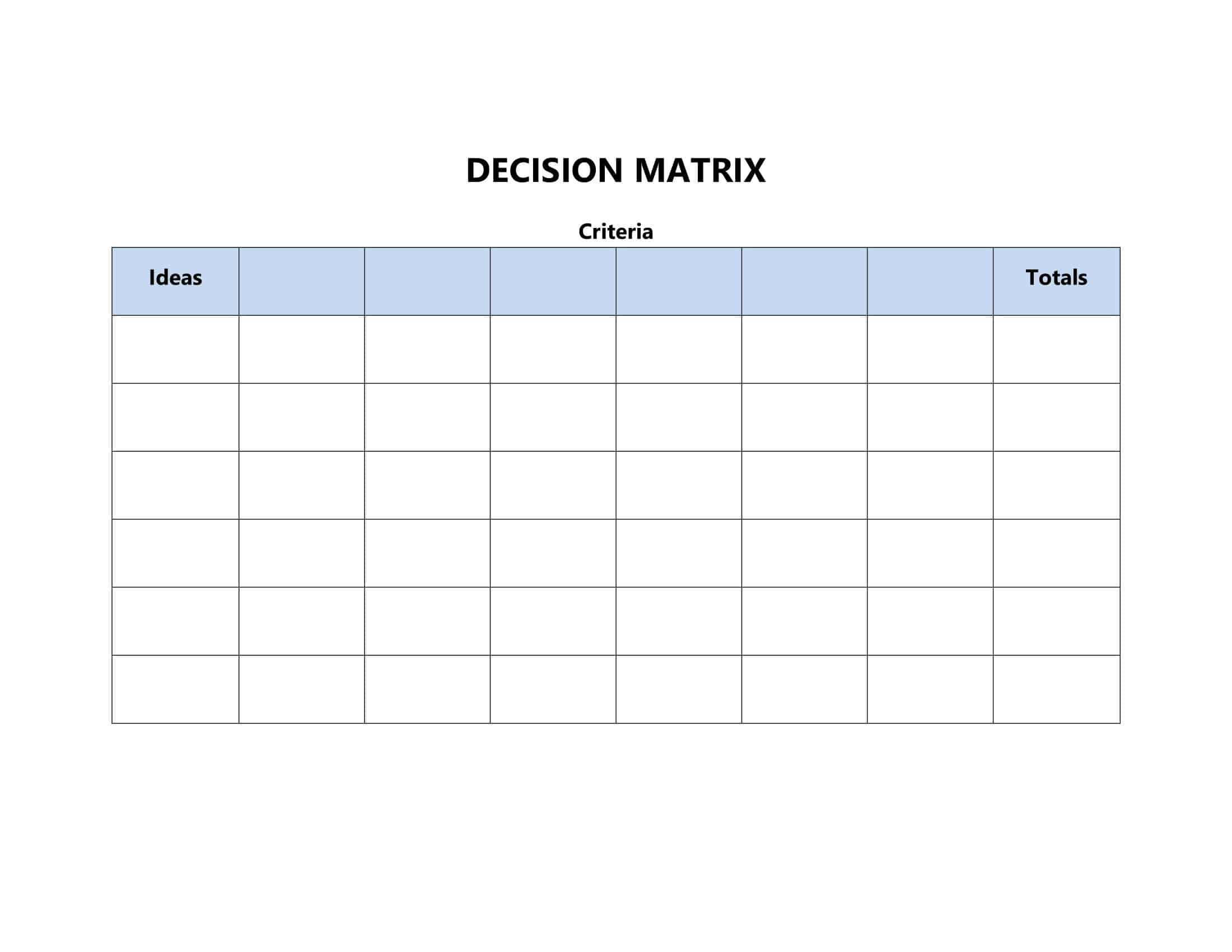

![%100 Free Hoodie Templates [Printable] +PDF 1 Hoodie Template](https://www.typecalendar.com/wp-content/uploads/2023/05/Hoodie-Template-1-150x150.jpg)
![Free Printable Food Diary Templates [Word, Excel, PDF] 2 Food Diary](https://www.typecalendar.com/wp-content/uploads/2023/05/Food-Diary-1-150x150.jpg 150w, https://www.typecalendar.com/wp-content/uploads/2023/05/Food-Diary-1-1200x1200.jpg 1200w)
![Free Printable Roommate Agreement Templates [Word, PDF] 3 Roommate Agreement](https://www.typecalendar.com/wp-content/uploads/2023/06/Roommate-Agreement-150x150.jpg)
